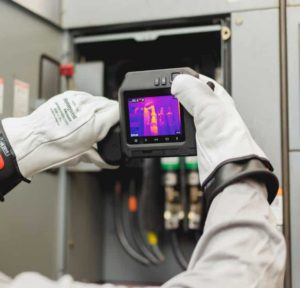A Guide for Building Operators
Seemingly, one of the most daunting events for tenants of all types is a scheduled utility outage. It’s a safe bet that nearly every Facilities or Property Manager has, at some point, tried to schedule a shutdown and experienced significant pushback from building occupants.
 Indeed, some building users have extremely critical systems, patients, or crucial medical research, so it is natural for them to be concerned. What always seems odd, however, is the heightened concern about a highly coordinated shutdown, versus an unscheduled event. After all, these shutdowns aim to ensure everything operates correctly when it is supposed to, including during unscheduled utility outages.
Indeed, some building users have extremely critical systems, patients, or crucial medical research, so it is natural for them to be concerned. What always seems odd, however, is the heightened concern about a highly coordinated shutdown, versus an unscheduled event. After all, these shutdowns aim to ensure everything operates correctly when it is supposed to, including during unscheduled utility outages.
Hopefully, this article can shed some light on why maintenance shutdowns are required, and what precautions are taken by the subcontractors, building staff, and owners, to ensure everything goes smoothly.
WHY
Whether we like it or not, electrical preventive maintenance (EPM) is a regulatory requirement. The path is a bit circuitous, but OSHA leads us to NFPA 70E, which, along with 70B, details the requirements for PM. Apart from being a regulatory requirement, having a robust PM program for all your equipment is a Best Practice with measurable benefits to uptime, equipment life, O&M costs, and more. Some companies and facilities wouldn’t dream of not maintaining chillers or air conditioners, yet they haven’t serviced their electrical gear in over a decade. Ask yourself, which will cause more disruption to your site? Losing an AC Unit, or your main SES?
WHAT
 The scope of a maintenance shutdown typically includes “cleaning and torquing” – cleaning of the gear, lubrication of moving parts, and torquing of bolted connections. The work also includes a specific set of maintenance tests designed for each particular piece of equipment. For example, the methods for maintaining oil-filled transformers differ from those used for medium-voltage disconnects. These tests are specified by NETA (interNational Electrical Testing Association), IEEE (Institute of Electrical and Electronics Engineers), manufacturers’ recommendations, and industry best practices. For greater peace of mind, ensure you select a subcontractor that is a NETA-accredited Company.
The scope of a maintenance shutdown typically includes “cleaning and torquing” – cleaning of the gear, lubrication of moving parts, and torquing of bolted connections. The work also includes a specific set of maintenance tests designed for each particular piece of equipment. For example, the methods for maintaining oil-filled transformers differ from those used for medium-voltage disconnects. These tests are specified by NETA (interNational Electrical Testing Association), IEEE (Institute of Electrical and Electronics Engineers), manufacturers’ recommendations, and industry best practices. For greater peace of mind, ensure you select a subcontractor that is a NETA-accredited Company.
HOW
Once the scope has been settled, your subcontractor should work with you to determine a date and time that minimizes impact on your occupants. More often than not, this is during evenings or weekends, which, of course, are typically charged at a higher rate than business hours. So, make sure your proposal has accounted for that, as necessary. Now, the real work begins for the subcontractor and Facilities Manager, Building Manager, etc.
Your subcontractor should work with you to identify any critical loads, and what redundancy, if any, is needed for those loads. Is a generator required? Will any UPSs be affected? What is their expected length of backup? What about access control, cameras, and other security systems? Are there specific IT requirements for dropping power? How do we shed load? Are there critical instruments or life-safety items that will be affected?
This pre-planning is a critical phase of your project, and as many concerns and/or pitfalls as possible should be identified and mitigated. It is also advisable for the building management or facilities staff to maintain open dialogue with tenants to identify and address their concerns. Critical items (such as main breakers) that may fail should have a plan for emergency replacement or bypass. There should be a plan for parts and materials that might be needed on the fly. All planning should aim at ensuring the facility fully recovers by the indicated time.
It’s Here! What to expect…
As previously discussed, your maintenance shutdown should be a well-planned event, with many contingencies in place. Your FM Team may take advantage of the downtime to work on other projects. Ideally, the shutdown has been fully communicated to all affected parties, including security, IT, vendors, on-site subcontractors, your executive team, etc.
With proper planning, you should have the appropriate staff on site (e.g., laboratory staff, IT personnel) to monitor critical systems. Facilities Teams should be present to ensure building systems come back online properly when power is restored. Typically, Building managers and/or Executive Staff will want to be notified when the outage is finished and everything is back online.
A competent subcontractor will gather all the staff involved in the shutdown (not just their own) and review the scope of work, the timelines, emergency plans, and hold a safety briefing. Loads will be shed if required, power disconnected as necessary, and verified dead per safety rules and best practice. It is worth noting that some shutdowns can be complex, with buildings or major circuits shutdown, maintained, and re-energized in succession. This is why it is beneficial for all involved not to rush the process. Rushing leads to mistakes, and mistakes can result in injuries.
The testing and cleaning will be completed as prescribed, along with any other activities detailed in the work plan. The shutdown leader will verify that all work is complete, and the de-energizing process will be reversed to re-energize everything. This is a critical time, and everyone will be watching to ensure that all equipment and systems come back online as intended. They don’t just “throw the switch and go home.”
Deliverables
A comprehensive post-shutdown report should include data sheets from the testing, before and after photos of the cleaning and torquing activity, an executive summary highlighting any deficiencies, and recommendations for repairs, replacements, or future maintenance. Remember – electrical Preventive Maintenance is no longer just a Best Practice, it is a requirement to be compliant with Federal Safety Regulations. Knowing what to expect, and maintaining open lines of communication between owners, subcontractors, and occupants can make a world of difference.


